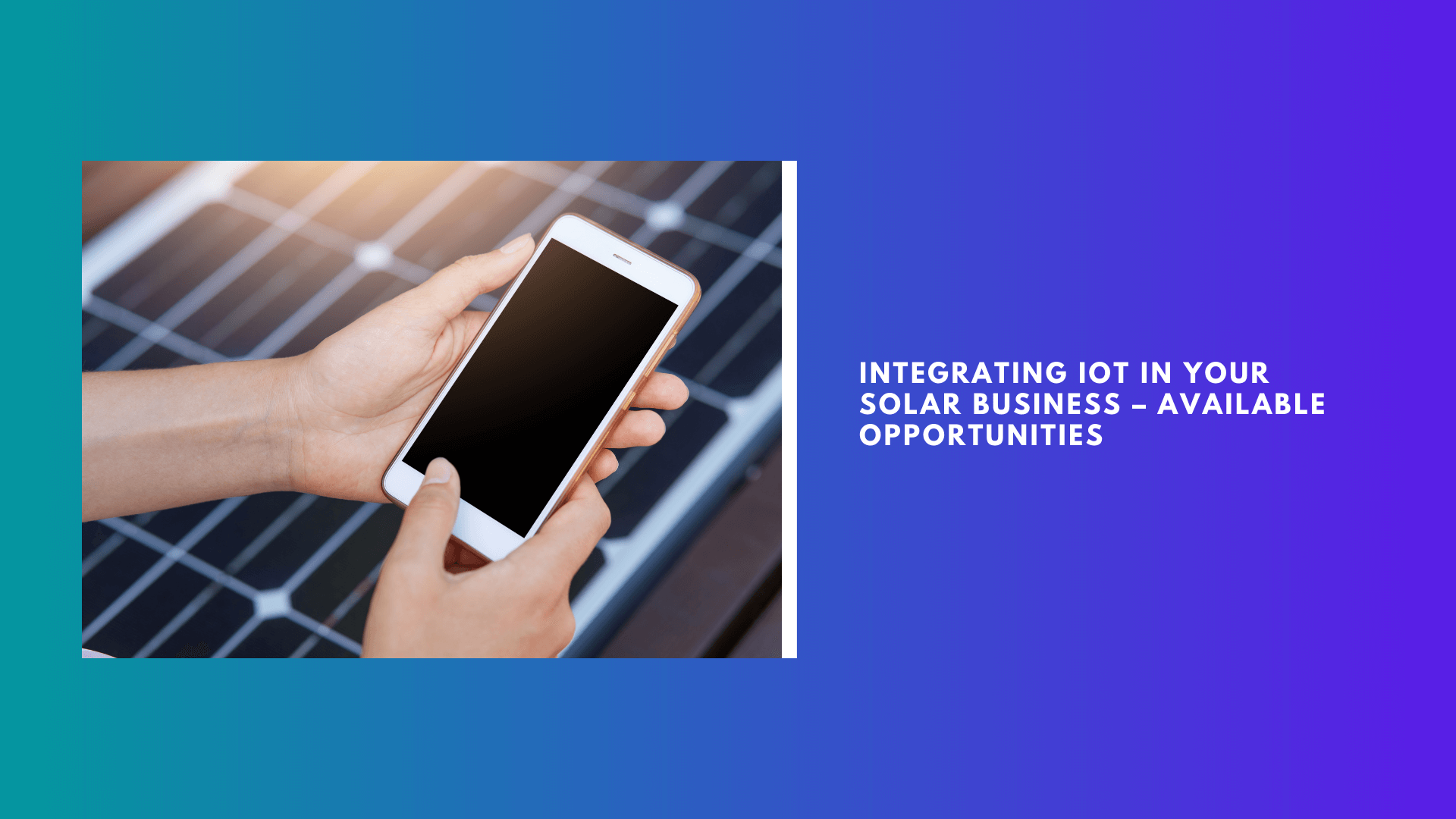There are over 10 million IoT devices in the world today. No field or niche has been left unaffected by the power of the Internet of Things.
What is the Internet of Things?
A group of connected physical objects embedded with sensors, processing ability, software, and other technologies that can be used to exchange data with other devices and systems over the Internet or other communications networks is called the Internet of Things (IoT).
IoT devices have come up as a technology trend that is revolutionizing every sector it touches. In fact, 83% of organizations using IoT technology have gone on record to say that they saw an improvement in efficiency with the introduction of IoT technology.
But what about the risks associated with introducing a new technology in business?
Well, 94% of businesses stated that the benefits of IoT integration far outweigh the risks!
And needless to say, it is also bringing waves of positive change in the renewable energy sector.
Mobile and web app can help in data analytics, dashboard management, and having all your data in one place, which can be used by C-level managers to make timely and data-driven decisions.
While renewable energy, primarily solar energy, is the need of the hour, acceptance rates have been low and the business maturity in the market also has been slow. But thankfully, IoT integrations in solar businesses are changing that.
And to give you some idea about how integrating IoT in your solar business is the right move today, here I have elaborated on the top 7 available opportunities that you can bank on now.
Read on.
1. Improving the Physical Health of Plants and Devices in Real-Time
With all-around, real-time monitoring ability, you can continuously check the physical health of solar plants and devices that your company has installed for clients. IoT devices with sensors and transmitters can also help you collect field data straight from a linked mobile device. This way, even before something is seriously wrong with the solar panels/devices, you can send in your technicians to locate and troubleshoot the errors. This will improve the customer experience manifold and ultimately have a positive impact on your market reputation while reducing the cost of unforeseen damages or issues.
2. Data-driven Insights On Plant/Device Performance
With the Internet of Things, you can easily collect and process a large amount of data like solar radiation, temperature, wind speed, dust levels, and energy outputs of individual panels. This will help you discover low-performing units and also identify the potential causes of such low performance.
All this, coupled with historical data about plant performances and outputs can be used to better optimize the devices that you manufacture. This will improve your product quality, thereby giving you a competitive edge in the market.
3. Proactive Malfunction Detection
For solar energy sector businesses engaged in serving residential or commercial establishments, IoT devices can be used for proactive malfunction detection. This can reduce downtimes and the cost of inactive or in-repair units.
4. Effective Energy Portfolio Management
By connecting your IoT devices to a mobile/web app, renewable energy businesses can also get one-stop access to a lot of field information including key KPI metrics on macro and micro levels. This data can help manage the energy portfolio effectively by increasing or decreasing energy production through the solar power plants based on the requirements.
5. Accurate Demand Forecasting
IoT-enabled smart meters can be used to capture precise consumption data. And then with the use of machine learning technology, future demand can be forecasted. These accurate demand forecasts can be used to change energy production to avoid excess or deficit energy production.
6. Precise, Real-Time Energy Generation Predications
The real-time information being gathered by IoT devices connected through a system of web/mobile-based solutions can be used to predict weather and other factors to forecast the energy generation. Based on this information ideal plant setup locations can be found. This can give businesses a major cost-saving advantage.
7. Safety Against Vandalism and Theft (Especially in Remote Areas)
Theft and vandalism attempts against solar power panels and systems are few, but not impossible, especially in rural areas. IoT sensors can be used to detect suspicious movements near the installed equipment. The sensors can then ring a remote alarm through mobile devices and inform the stakeholders about possible threats.
Getting Started
Want to harness the power of IoT for your solar business? Take the plunge today with SynergyTop. We have a team of 50+ experts with over half a decade of experience in the IT field and the will to explore, experiment, and play with IoT technology.
Send us an email at contact@synergytop.com to get the conversation about the integration of IoT into your solar business started.
About SynergyTop
SynergyTop is an award-winning digital commerce company offering new-age technology-backed web, mobile, and E-commerce solutions for small and medium businesses.
We have previously worked with several solar sector businesses like Rubicon and others and delivered bespoke solutions. We understand the specific tech needs of solar energy businesses and our expertise in IoT technology further helps us create and deploy enterprise-grade solutions that boost business in multiple ways.
















